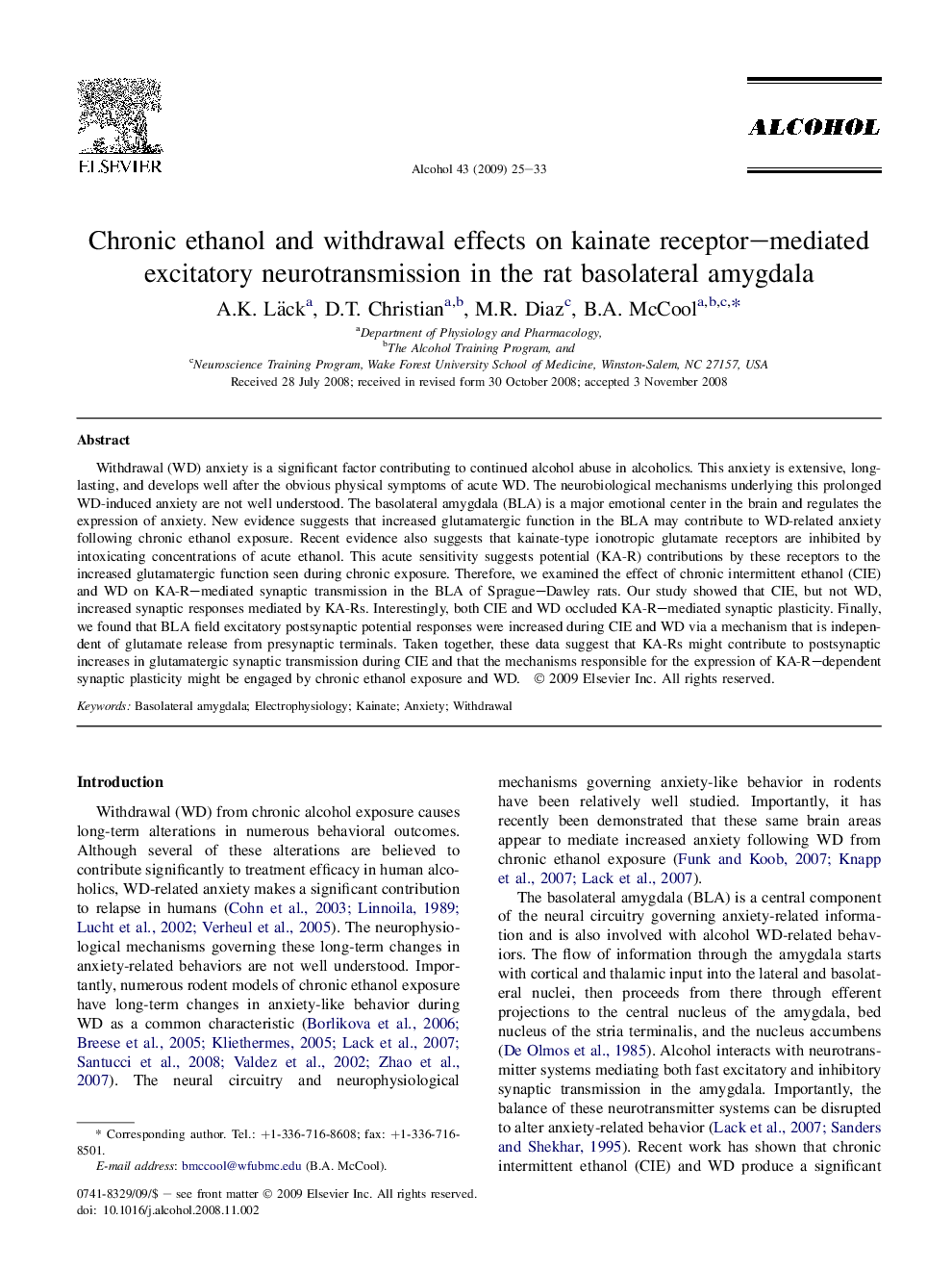| Article ID | Journal | Published Year | Pages | File Type |
|---|---|---|---|---|
| 1067763 | Alcohol | 2009 | 9 Pages |
Withdrawal (WD) anxiety is a significant factor contributing to continued alcohol abuse in alcoholics. This anxiety is extensive, long-lasting, and develops well after the obvious physical symptoms of acute WD. The neurobiological mechanisms underlying this prolonged WD-induced anxiety are not well understood. The basolateral amygdala (BLA) is a major emotional center in the brain and regulates the expression of anxiety. New evidence suggests that increased glutamatergic function in the BLA may contribute to WD-related anxiety following chronic ethanol exposure. Recent evidence also suggests that kainate-type ionotropic glutamate receptors are inhibited by intoxicating concentrations of acute ethanol. This acute sensitivity suggests potential (KA-R) contributions by these receptors to the increased glutamatergic function seen during chronic exposure. Therefore, we examined the effect of chronic intermittent ethanol (CIE) and WD on KA-R–mediated synaptic transmission in the BLA of Sprague–Dawley rats. Our study showed that CIE, but not WD, increased synaptic responses mediated by KA-Rs. Interestingly, both CIE and WD occluded KA-R–mediated synaptic plasticity. Finally, we found that BLA field excitatory postsynaptic potential responses were increased during CIE and WD via a mechanism that is independent of glutamate release from presynaptic terminals. Taken together, these data suggest that KA-Rs might contribute to postsynaptic increases in glutamatergic synaptic transmission during CIE and that the mechanisms responsible for the expression of KA-R–dependent synaptic plasticity might be engaged by chronic ethanol exposure and WD.
